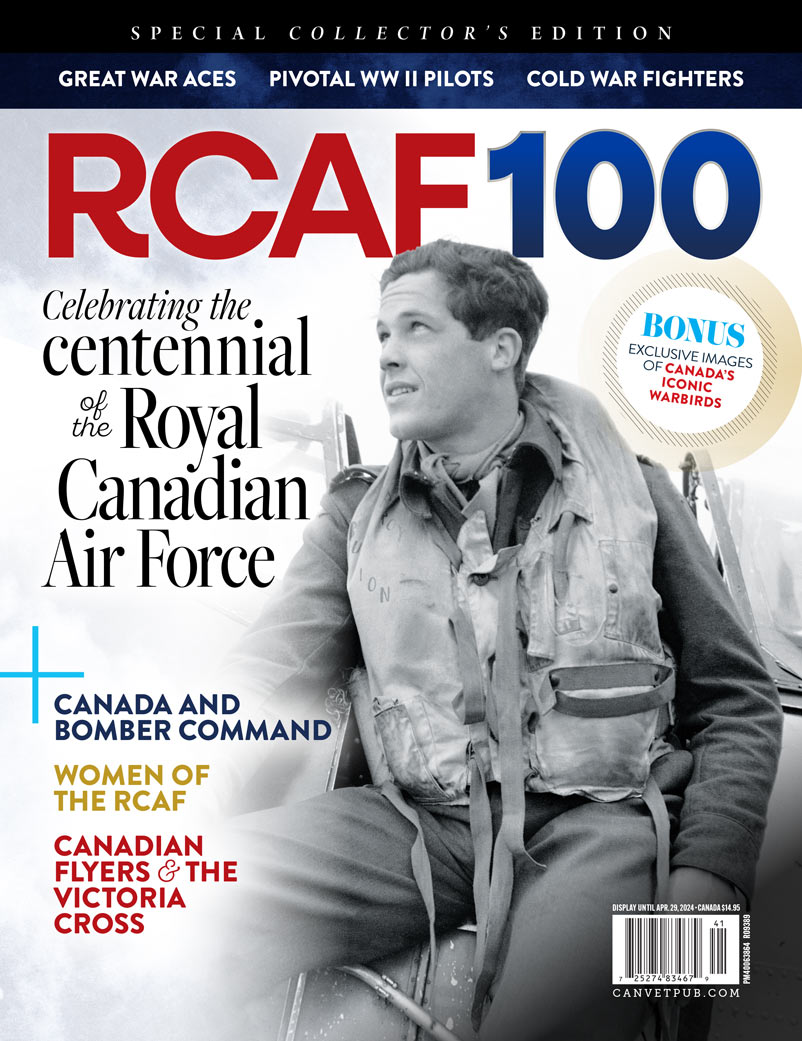
On the wings of a burgeoning aviation culture of hinterland stick jockeys, airmail pilots and high-flying adventurers, the Royal Canadian Air Force emerges from 100 years of war and peace as a respected, if not feared, hunter, protector and humanitarian presence in troubled skies the world over. The fascinating story of the RCAF is one of passion, perseverance and promise.
Aviation was made for a country like Canada, with its vast empty spaces, isolated communities and rugged landscapes. The First World War—the first industrialized war—proves the catalyst that propels Canada’s fledgling industry forward. Thousands of Canadians serve with Britain’s aviation services; led by Billy Bishop, 171 earn ace status with at least five kills; four are awarded the Victoria Cross.
The Royal Canadian Air Force is actually the fourth iteration of a Canadian air corps. None of its predecessors amount to much of anything. From the Canadian Air Corps, formed at the outset of WW I, through two versions of a Canadian Air Force, the formation of a military aviation component is plagued by corruption, incompetence, lack of vision, lack of money and a barrel-load of politics.
An uneasy peace imbues the military’s political masters with confidence in their belief that military aviation is an unnecessary luxury. Civil aviation, on the other hand, is taking off. Canada becomes a leader in its regulation and administration. A new CAF is tasked with the job and given Royal designation. Its pilots take on more civil duties as flight opens the way to new settlements in more remote regions.
As the troubled skies of 1930s Europe darken, the RCAF will find itself in the vanguard of a glorious and bloody new age. But the path to permanence, and relevance, is not an easy one. The air force is plagued by staff shortages, funding cuts and obsolescent equipment. By 1937, however, it’s evident that Canada must step up. Budgets increase; new Hurricane fighters are purchased. War is coming.
The RCAF grows into a fighting force in the days leading to the Second World War. By spring 1940, No. 1 Squadron is in England preparing for the Battle of Britain. It acquits itself well and, as the redesignated 401 Squadron, goes on to lead all Canadian units in WW II aerial victories with 186.5 enemy aircraft destroyed.
A new era of air warfare has begun, and Canadians play no small part in it. Between 1939 and 1945, the RCAF enlists 232,000 men and 17,000 women. It deploys 47 squadrons overseas. RCAF personnel serve worldwide. Tens of thousands more enlist in the RAF. Over 17,000 Canadian airmen are killed in action, but six years of war prove the making of Canada’s military aviation corps.
The 1950s usher in a brave new world, rife with fear. Enemies are now friends. Friends have become enemies. And a nuclear arms race casts an ominous shadow over the entire planet. A proxy war breaks out on the Korean peninsula and RCAF pilots, flying with American units, conduct their first combat operations of the jet age. More wars will follow.
Cold War tensions and Canada’s vast northern borders keep the RCAF on its toes. It begins developing the promising Avro CF-105 Arrow fighter, only to see the project abruptly cancelled. It expands its role patrolling the coasts and conducting humanitarian and search and rescue operations. In 2022, it forms 3 Canadian Space Division as traditional and emerging powers engage in a new space race with profound implications for global security.